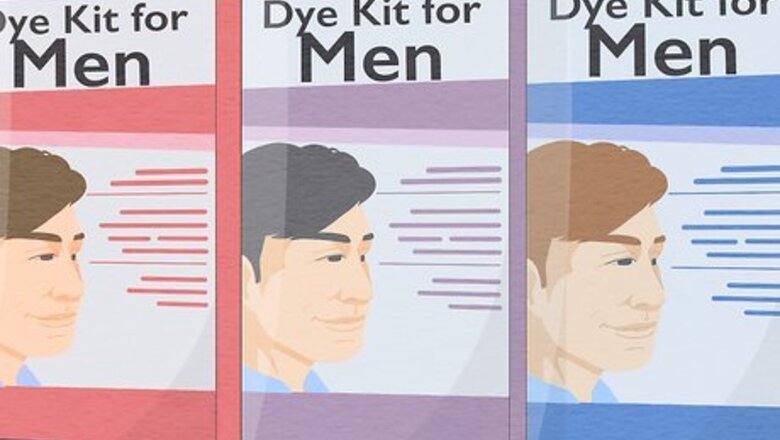
views
- Get a natural look by picking dye that matches your skin tone and original hair color—but take your personal style into account too.
- Avoid washing your hair for 48 hours before dyeing and rub lotion across your hairline before applying the dye.
- Work the dye into your hair, moving from your roots outward and paying attention to noticeable sections like your hair part, hairline, and cowlicks.
- Wash your hair every 2-3 days, using color-preserving hair products and gel or pomade to style it rather than using heat.
Choosing a Dye
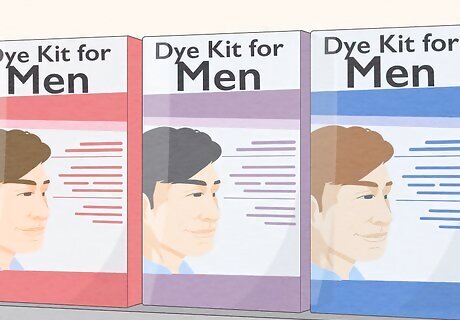
Use a boxed permanent hair dye kit for simplest solution. Boxed kits are the best choice for dyeing your hair on your own because they include everything you need: pre-measured color, developer, and an applicator. All you have to do is mix it according to the instructions! Permanent hair dye lasts about 8 weeks or so; it's the longest-lasting option available.
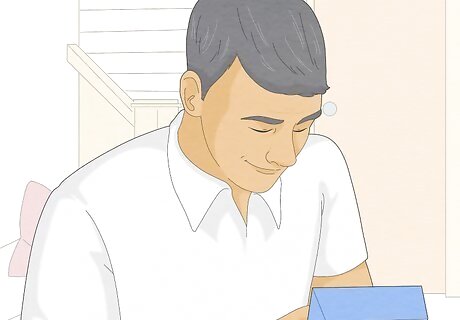
Pick a color that suits your skin tone for a natural look. In general, a hair tone that’s opposite your skin’s undertones is a good choice. Warmer hair colors work best for people with cool skin tones. Cooler hair colors work best for those with warm skin tones. To determine your skin tone, look at the underside of your arm. If you have blue or purple veins, you have a cool skin tone. If you have more greenish veins, you have a warmer skin tone. Warm hair colors have words like “golden,” “bronze,” and “copper” in their names. Cool hair colors have words like “platinum,” “ash,” and “cherry” in their names.
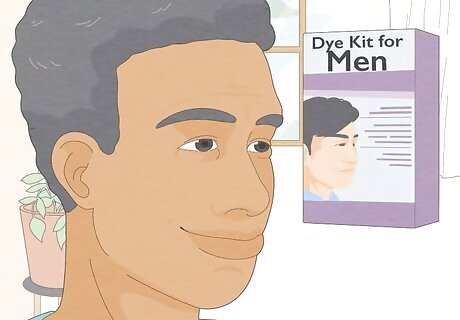
Go for darker colors if you have darker, thicker, curlier hair. Light colors like platinum blonde don’t usually look good for this type of hair. It may be possible to bleach dark, thick hair, but you might need to do several treatments, which can really damage your hair. If you really want to dye your dark hair a light color, it’s best to get it done at a professional salon to achieve good results with minimal damage to your hair.
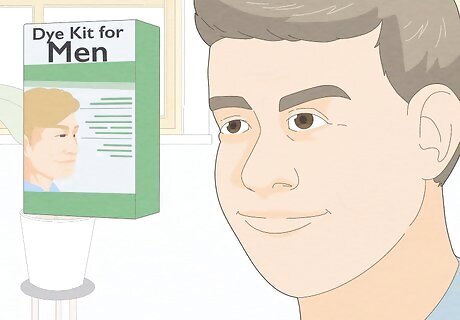
Get a shade close to your real hair color for a natural option. Choose a shade that is a touch lighter than your natural shade for the best results. In other words, if you’re naturally dark blonde, pick a medium blonde dye color. If rejuvenating your gray hair for a more youthful look is your primary goal, look for dyes with labels that say things like “gray coverage” or “takes away gray.”
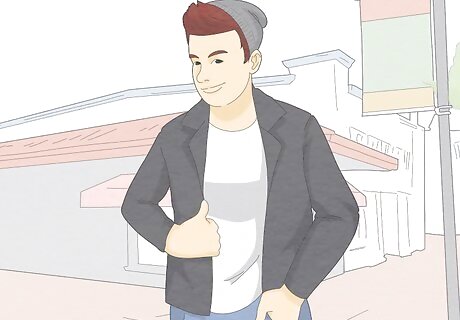
Take your personal style and aesthetic into account. Think about how you like to dress or how you dress for work and make sure the color you pick works with your style. If your style is more subtle, natural hair colors probably work best. If your style is on the edgy side, feel free to pick a color that’s a bit more edgy. For example, if you work in a bank and wear a suit and tie to work every day, natural colors like browns and blacks are probably best. If you work in a design agency and wear whatever you want to work every day, you could choose bleached blonde or pink hair.
Applying the Dye
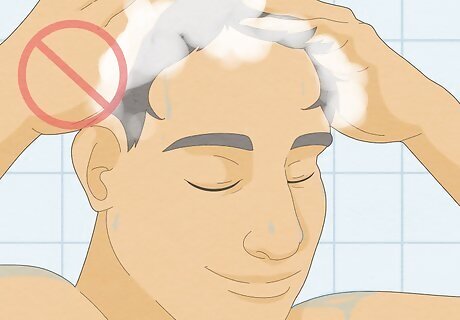
Don’t wash your hair for 48 hours prior to dyeing it. This lets the natural oils build up on your hair and scalp. The oils act as a natural barrier against chemicals in the dye, to protect your hair and scalp from irritation and damage. If you’re about due for a haircut, now’s a good time to get cleaned up! That way, you can wait as long as possible to cut your hair after dyeing it. Avoid using hair products for a few days as well.
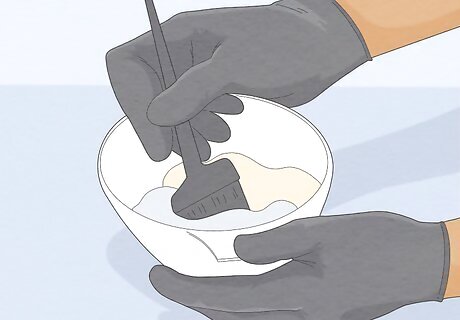
Mix the dye together according to the package’s instructions. Read the manufacturer’s instructions that come with your chosen box of dye carefully. Mix together the included color and developer to create the usable dye. Dyeing kits typically come with 2 tubes of color, a mixing bowl, and a brush to use for mixing and applying the dye. Wear latex gloves to avoid staining your hands with dye by accident. Dyeing kits often come with a pair of gloves for you to use.
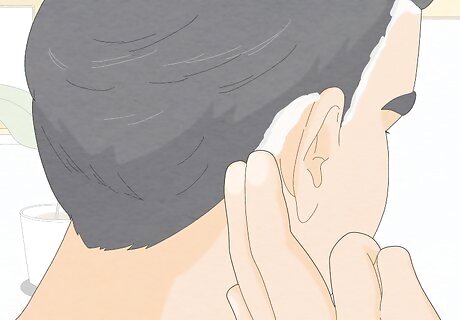
Rub a thick layer of lotion along your outer hair line. Use any type of body lotion you have available. Rub it along your skin just below your hair line on the front, sides, and back of your head. Make sure to cover the tops of your ears, behind your ears, and your neck line. This helps prevent the dye from bleeding onto your skin and staining it, especially if you’re using a dark dye. Before you do this, strip down to your boxers so you don’t get any lotion or dye on your clothes during the process. Cover your shoulders with an old towel to protect them from drips. Petroleum jelly also works if you don't have any lotion. Work in a bathroom in front of a mirror and over the sink or in the shower to avoid making a mess. Cover any surfaces you don’t want to accidentally stain with plastic or a towel.
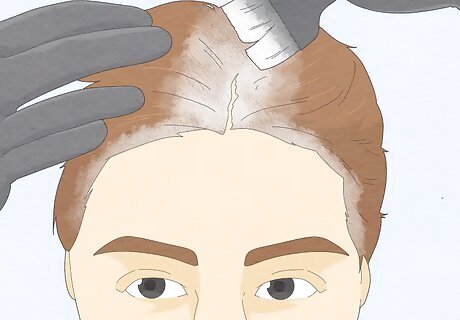
Brush the dye onto your roots first, using the provided brush applicator. Dip the brush into the mixed dye and start brushing it onto your roots, going against the direction your hair lays in to really work it in. Work in small sections, starting with the most noticeable areas. Use multiple mirrors or have someone help you get the back and sides of your head where it’s hard to see.
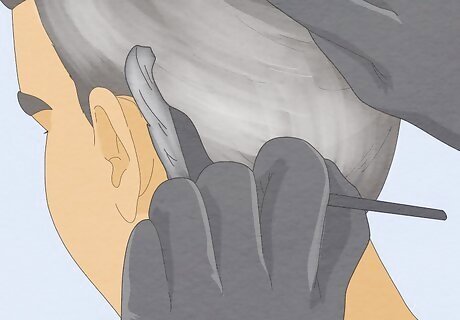
Work the dye into the rest of your hair. Again, work in sections and work out from the most noticeable sections, such as your hair part, your hairline, and any cowlicks. Brush the dye out from the roots onto the rest of your hair until it’s evenly covered. At this point, you can work the dye into the rest of your hair using gloved fingers if it’s easier. Just rub the dye in as if you’re lathering shampoo into your hair.
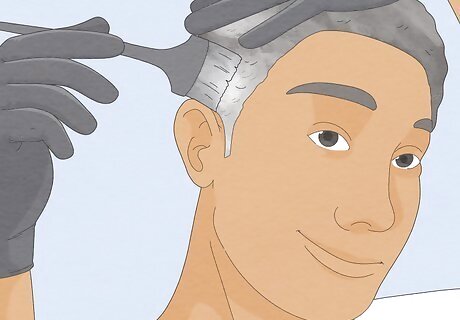
Apply dye to targeted areas if you’re just trying to hide gray spots. Instead of brushing the dye onto all your hair, work it into the roots wherever you have patches of gray hair. Carefully brush it out onto the other gray strands of hair. This is why it’s important to choose a shade slightly lighter than your natural color if you’re just targeting gray hairs. That way, it blends in more naturally than a darker color.
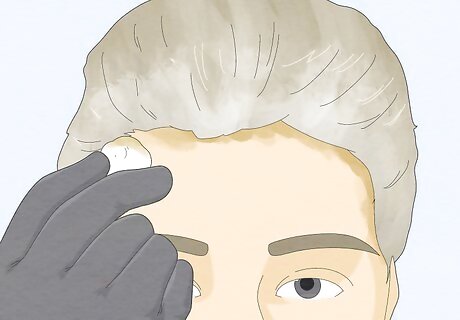
Let the dye sit for the recommended amount of time. Refer to the manufacturer’s instructions for the recommended amount of time to let it sit. This varies depending on the type of dye and the color you’re using, but it might be somewhere between 15 and 45 minutes. It’s normal for the dye to stain some of your surrounding skin at first. You can wipe it off with a cotton ball dipped in isopropyl alcohol.
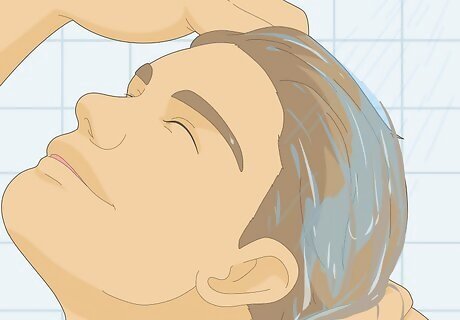
Rinse the dye out thoroughly. Hop in the shower or rinse your hair in the sink under cool water, which is less likely to cause the dye to fade. Rinse your hair until the water starts to run clear. Don’t use shampoo for this. Wait 72 hours after you dye your hair to shampoo it for the first time. This gives the color time to set.
Maintaining the Color
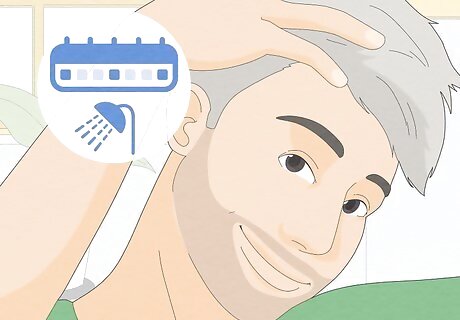
Limit how frequently you wash your hair. The more you wash it, the faster the color fades. Instead of washing your hair every day, try to do it every 2 to 3 days. Less shampooing is generally better for your hair, anyways! If you feel like your hair needs a rinse between washes, that’s okay, just skip the shampoo. Washing your hair in cooler water helps the dye last longer, too.
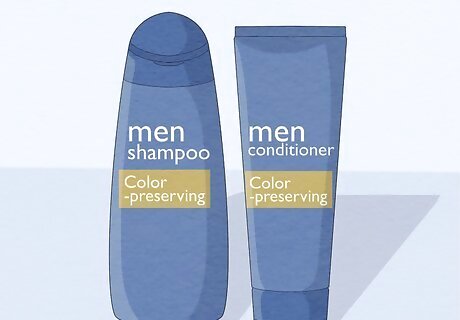
Use color-preserving shampoo and conditioner when you wash your hair. Buy a shampoo that’s specifically formulated for color-treated hair and doesn’t contain any sulfates. Get a color-preserving conditioner to use after each shampoo as well. These products will help slow down dulling and fading and keep your new color vibrant for longer. If you bleached your hair blonde, choose a purple toning shampoo to prevent brassiness and yellow and orange tones.
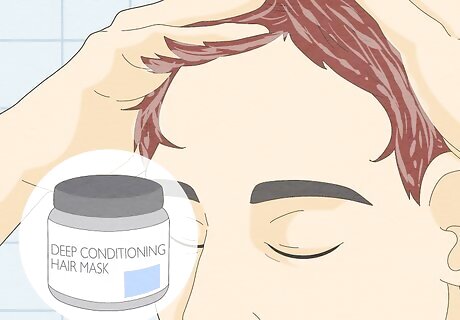
Apply a deep conditioning hair mask treatment once a week. These types of hair masks hydrate your hair more than normal conditioners. Use a deep conditioner once a week after shampooing to keep your color-treated hair in top condition. Color treatments are a chemical process, so giving your hair a little extra TLC and hydration helps counteract the harsh chemicals.
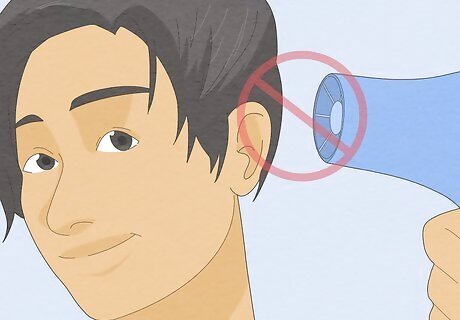
Avoid heat styling your hair. Using a blow dryer to dry and style your hair causes dye to fade faster. Instead, let your hair air dry and style it with gel or pomade when you want to look your best. If you absolutely have to use a blow dryer, use it on a low heat setting and apply a heat protectant spray or cream to your hair first.
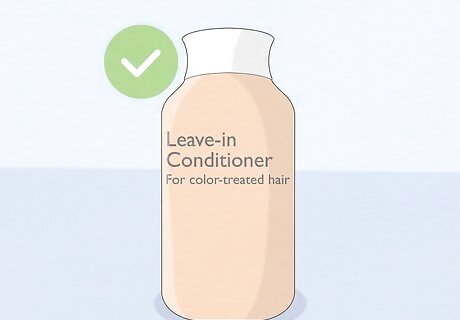
Avoid chlorine as much as possible. Chlorinated pools are the enemies of dyed hair. Stay out of chlorinated water as much as possible to limit premature fading. If you absolutely must go in a pool, try coating your hair with a leave-in conditioner first to help reduce fading.
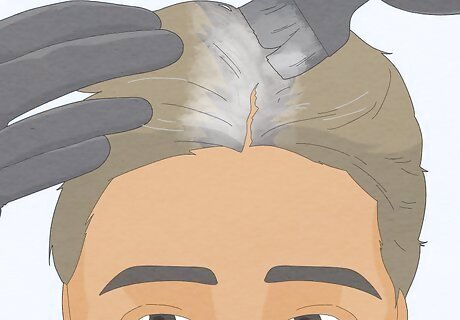
Touch your hair up with dye when your roots start to show. How often you need to touch up the dye job depends on how fast your hair grows and how fast the dye fades. When your roots are showing and you don’t think the color looks good anymore, you can apply dye just to the roots. If the overall color is starting to fade, it’s better to start the process over and re-dye all your hair.














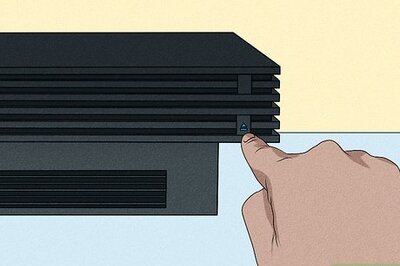



Comments
0 comment